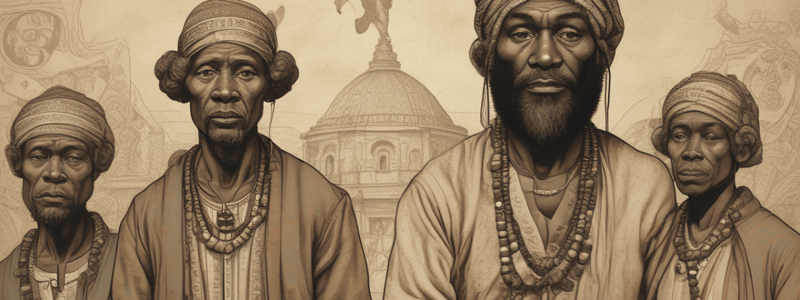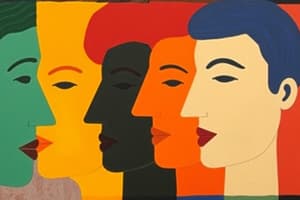Podcast
Questions and Answers
What was Samuel Stanhope Smith's theory on racial change?
What was Samuel Stanhope Smith's theory on racial change?
- Racial change was impossible
- The Bible justified slavery
- Black people were incapable of mental improvement
- Improving the social environment could uplift nonwhite races (correct)
What was Thomas Jefferson's view on Native Americans?
What was Thomas Jefferson's view on Native Americans?
- They could improve and become civilized (correct)
- They were incapable of mental improvement
- They could not become civilized
- They had a separate ancestry
What was the purpose of Thomas Jefferson's belief in polygenesis?
What was the purpose of Thomas Jefferson's belief in polygenesis?
- To prove Black people were inferior
- To justify slavery
- To justify sending freed Black people to Africa (correct)
- To show that Native Americans could not become civilized
Why did enslavers reject the theory of polygenesis?
Why did enslavers reject the theory of polygenesis?
What was the proposed solution to America's racial problem?
What was the proposed solution to America's racial problem?
What was the context of Henry Moss being mentioned in the passage?
What was the context of Henry Moss being mentioned in the passage?
Study Notes
European Influence on American Racial Landscape
- European anthropology and republican optimism shaped American understanding of their racial landscape.
Racial Change Theory
- In 1787, Samuel Stanhope Smith published "Essay on the Causes of the Variety of Complexion and Figure in the Human Species".
- The treatise articulated the theory of racial change, suggesting that improving the social environment could uplift nonwhite races.
- According to this theory, a proper society could "whiten" men, implying innate human equality.
Jefferson's Beliefs
- Thomas Jefferson disagreed with the racial change theory.
- He believed Native Americans could improve and become "civilized".
- However, he declared that Black people were incapable of mental improvement.
- Jefferson supported the theory of polygenesis, or multiple creations, suggesting Black people might have a separate ancestry.
- He used polygenesis to justify schemes for a white America, such as gradually sending freed Black people to Africa.
American Racial Problem
- Many Americans believed that nature had made the white and Black races too different to peacefully coexist.
- They viewed African colonization as the solution to America's racial problem.
- Enslavers rejected polygenesis as antibiblical and a threat to their justification of slavery based on the Bible.
Studying That Suits You
Use AI to generate personalized quizzes and flashcards to suit your learning preferences.
Description
This quiz explores the 18th-century American view on racial differences, influenced by European anthropology and republican optimism. It delves into Samuel Stanhope Smith's treatise on racial change and the idea of social environment improvement leading to racial uplift.




